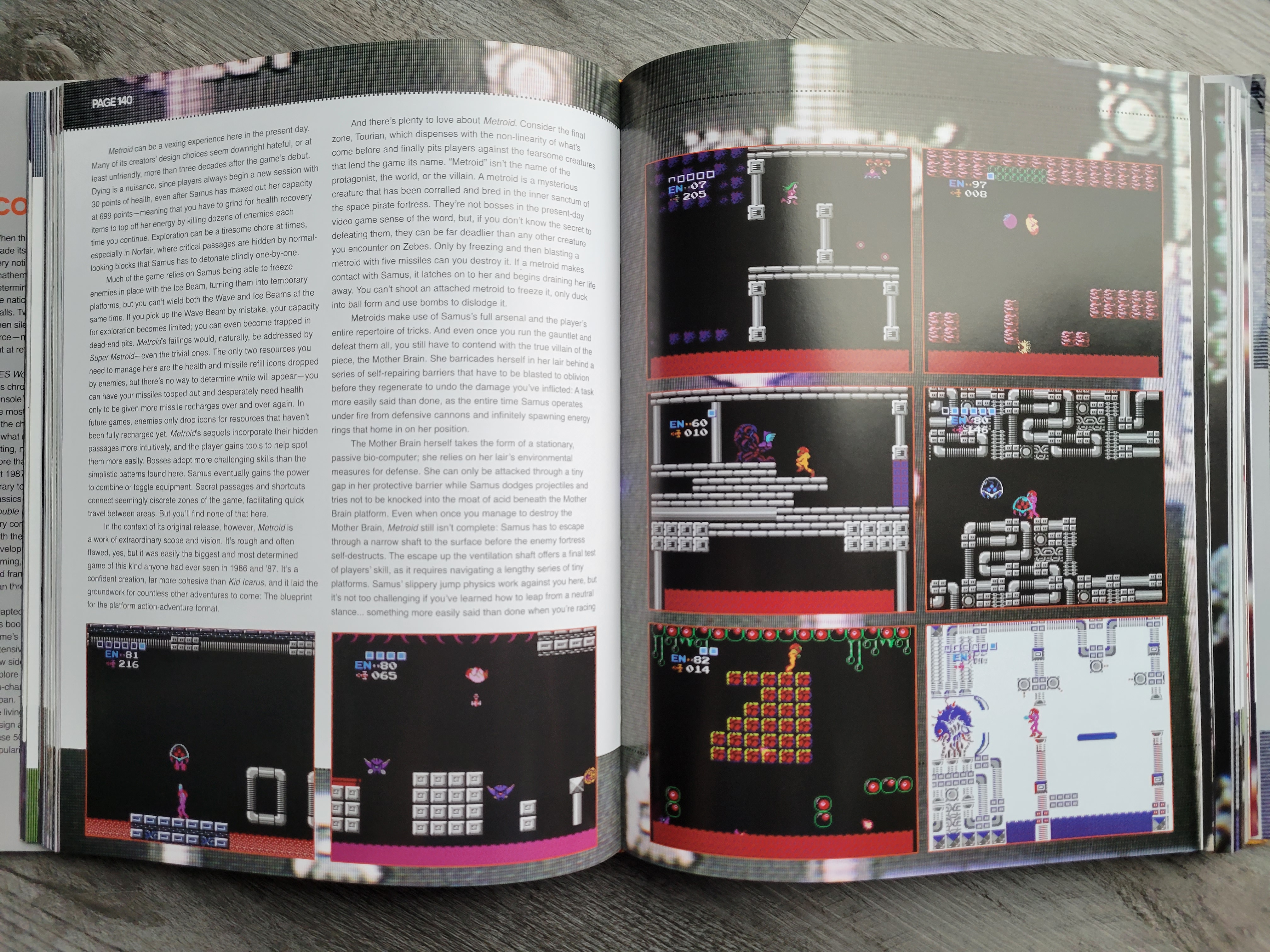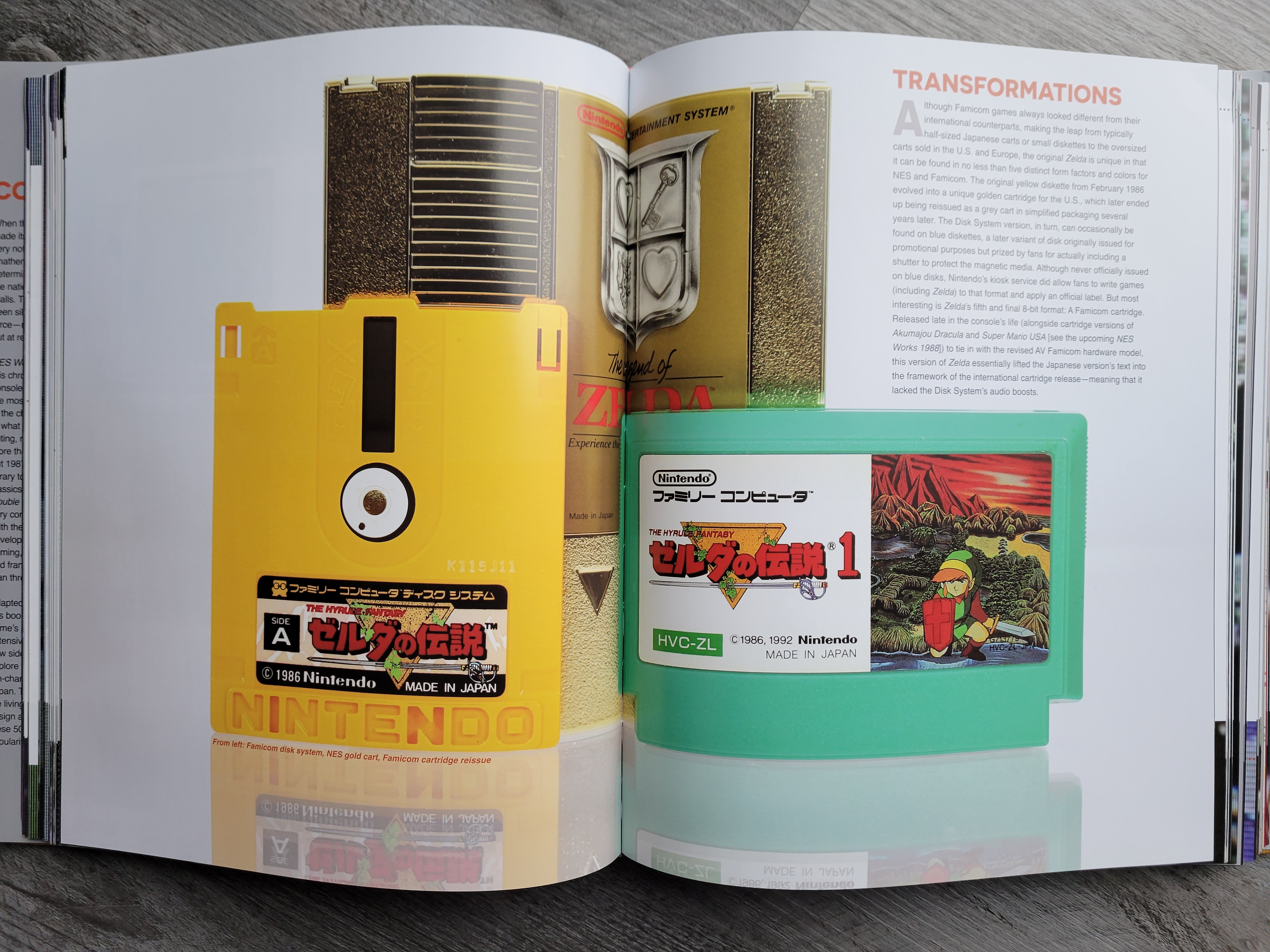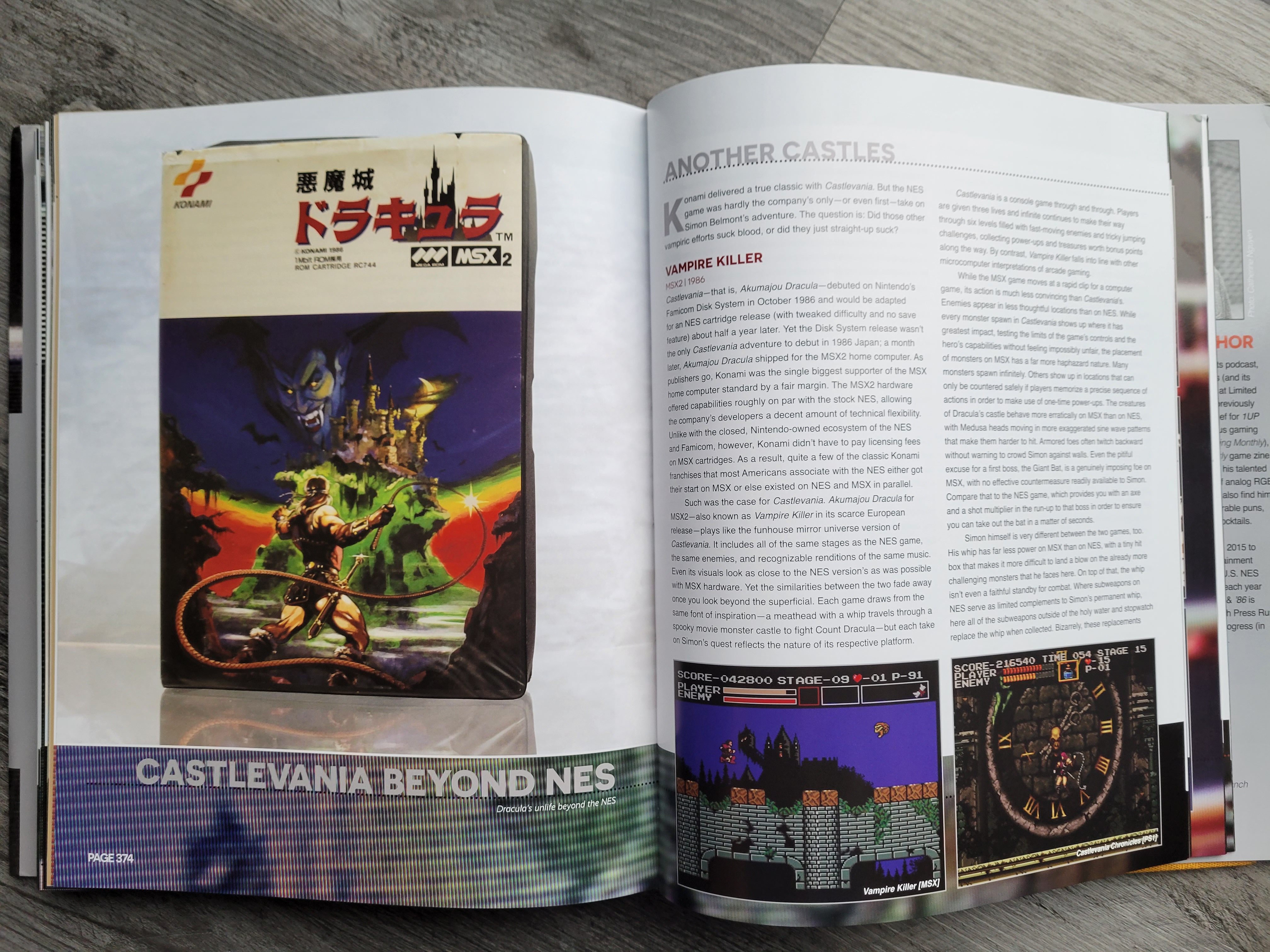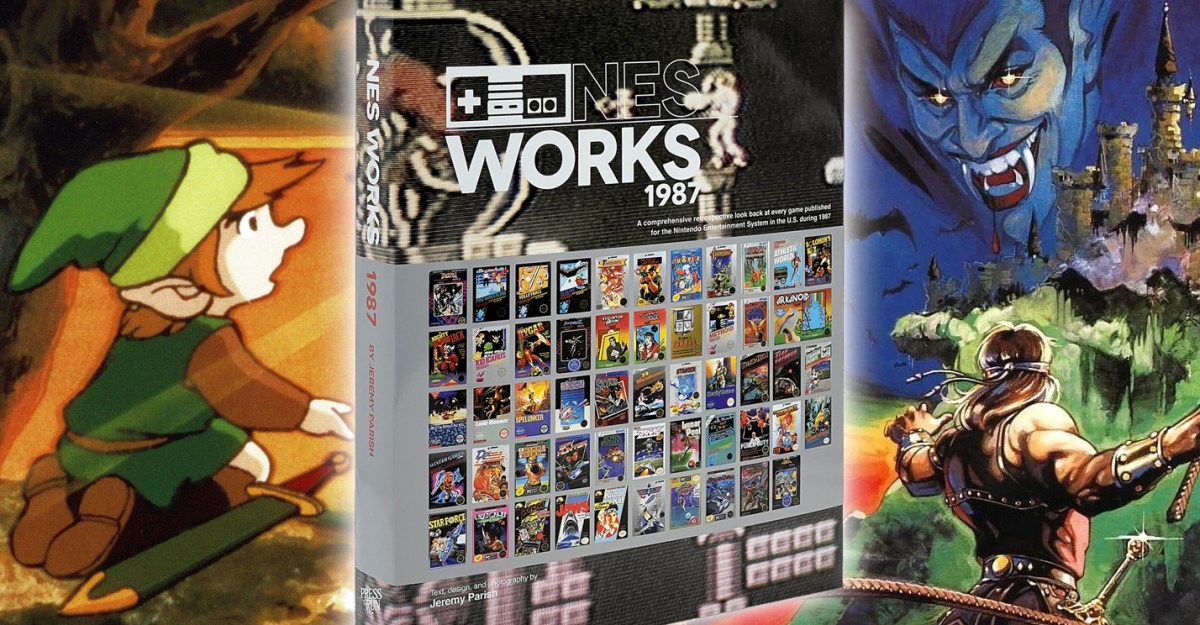Delivering the likes of The Legend of Zelda, Metroid, Mike Tyson’s Punch-Out!!, Castlevania, and Mega Man — among others — 1987 was a seismic year for the NES. And whether you lived through it or weren’t quite born yet, it’s a huge topic that isn’t easily summarized in a couple Wikipedia articles. Fortunately, NES Works 1987 from author Jeremy Parish and Press Run Books does an outstanding job of not only reviewing every game released that year in the United States but also of placing each one into its historical context at the time of release. Depending on your age, the book is either a valuable historical tome or a work to ignite and fill in the gaps in your childhood nostalgia.
In the Shadow of the Famicom Disk System
A fascinating thing about several of the NES games released in 1987 is that they weren’t originally designed for that hardware. Rather, many of them (including Zelda and Metroid) originally launched for the Japan-only Famicom Disk System, a disk-reader add-on console for the Famicom, and they were converted into cartridges to be sold internationally. At the time, most kids in North America were none the wiser that a gizmo they had never seen was having such an outsized effect on the games they were playing.
Likewise, some NES games of 1987 were also ports of games for Japanese PC gaming platforms. Or they were simply belated ports of fading arcade hits like Elevator Action or Spy Hunter. The point is that a lot of these NES games weren’t always NES games; they weren’t even always Famicom games.

As such, Parish spends much of NES Works 1987 as a dedicated time traveler, going back and forth through the years to explain 1) when and where a game originally launched in Japan compared to in North America, 2) which prior games likely or definitely influenced a game’s development, 3) how arcade or PC versions of a game differ from the NES release, and 4) how a certain game appeared to the public in North America at the time of its release compared to what other games were on the market. If that sounds like a lot of information, it is — in a good and wonderful way — and it definitely takes full advantage of the hardcover book’s 420-page length.
The actual discussion of the 50+ games’ gameplay is insightful and useful as well. It finds the silver linings in failures like Deadly Towers, puts the last mound of dirt on the grave of Super Pitfall, and demonstrates why games like Zelda and Mega Man were so extraordinary compared to what came before. The totality of the Mega Man franchise is my favorite in gaming, but Parish made me appreciate the original Mega Man more than I already did.
And the book is far from wall-to-wall text. There are myriad high-quality images of gameplay and game packaging, often for the US NES release but with numerous cool images of Famicom Disk System game packaging as well. Even though this book is largely adapted from a YouTube series Parish maintains, it never reads that way, which is a compliment. You can read it start to finish (which I did) or just pick out random entries for games that interest you, and you won’t miss a beat. NES Works 1987 is a powerful time capsule that conveys everything you need to know in one convenient text.

Extra Credit
In addition to covering all of the games of the year, NES Works 1987 is stuffed with additional essays large and small on relevant adjacent topics. For instance, in the little essays, Parish addresses intriguing and random topics like nudity that slipped past Nintendo censorship, why licensing discrepancies have caused some games to totally disappear, the early days of games using licensed IPs, and providing a broad overview of games that used the NES Zapper. It’s all great stuff that doesn’t repeat itself too badly over what was discussed in individual game entries.
The largest essays appear at the tail end of the book. Among other things, they provide a fantastic in-depth analysis of the life and death of the Famicom Disk System, as well as another fantastic analysis of all versions and remakes of the original Castlevania. The only essay that feels wildly out of place is the very last one — a write-up of Mega Man Legends on PlayStation 1. I suppose it’s intended to mirror the innovation that Mega Man Legends brought into 3D compared to the innovation that Mega Man brought into 2D, and it’s as well written as everything else in the book. But even as a hardcore Mega Man lover, I think it’s an extremely bizarre note to end the book on.
Additionally, typos are pretty rare in NES Works 1987 until these final essays, when they suddenly become kind of common. However, this is still an improvement over the number of typos that plagued the otherwise stellar Super NES Works Vol. I. Things are trending in the right direction.

The Review Verdict on NES Works 1987
It’s easy to forget that video games as we know them are not how they have always been. Game design fundamentals we take for granted now were revelations only gradually coming into focus in the mid-1980s, and NES Works 1987 will make you appreciate how extraordinary some of these pioneers really were. With its in-depth analysis of dozens of games and intricate explanations of related ideas like the Famicom Disk System, this is yet another great book to pick apart one day at a time as you eat breakfast or dinner.
A review copy of NES Works 1987 was provided by the publisher.






Published: Dec 11, 2022 04:39 pm